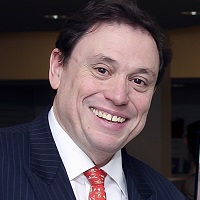 By Paul Grundy, MD, Chief Transformation Officer, Innovaccer & President, GTMRx Institute
By Paul Grundy, MD, Chief Transformation Officer, Innovaccer & President, GTMRx Institute
Twitter: @GTMRxInstitute
If you know me, you know that I firmly believe “no mission, no margin.” When it comes to optimizing medication, fulfilling the mission creates the margin. You cannot divorce the two.
Comprehensive medication management (CMM) is how we do it.
Avoidable illness and death resulting from non-optimized medication use led to an estimated 275,000 avoidable deaths in 2016. The cost: $528.4 billion.¹ That’s 16% of the annual $3.2 trillion in U.S. health care expenditures. You can find a copy of the study here. So, we know that CMM is one solution to transform practice and care delivery.
CMM is a coordinated, person-centered team effort that improves patient care by utilizing the skills and expertise of everyone on the care team—including the clinical pharmacist who works in collaborative practice with the physician. And when properly executed, it checks all four boxes of the Quadruple Aim: enhancing patient experience, improving population health, reducing the per capita cost of health care and improving the work life of clinicians and staff.²
Let’s start with the last one first.
More joy, less burnout
An estimated 35% to 54% of physicians have substantial symptoms of burnout.³ But did you know embedding a medication expert into the primary care team reduces burnout? It does. A 2019 study ties decreased PCP burnout and improved professional wellbeing to embedding a clinical pharmacist in the primary care team.4
Researchers tied the two together. To demonstrate the connection between CMM and reduced burnout, they looked at seven drivers of burnout and/or engagement.5 What they found was, when clinical pharmacists are embedded in a clinical team, primary care physicians experienced improvement in work-life aspects:
- decreased workload;
- satisfaction that patients are receiving better care;
- reassurance;
- decreased mental exhaustion;
- enhanced professional learning;
- increased provider access;
- achievement of quality measures.
The ability to work closely with another professional to care for patients and discuss care plans made PCPs feel more supported, reassured and less burned out.
Better health, lower costs
CMM is an innovation with a track record of success. A 2012 paper looked at team-based medication management services and placed the ROI around 3:1 to 5:1—and as high as 12:1. The result: a reduction in the direct mean medical cost of between $1,200 and $1,872 per patient per year for the first five years. (And that’s 2012 dollars!) The paper focused on patients with chronic diseases such as diabetes, cardiovascular diseases, asthma and depression.6
Notice that the savings comes from the total cost of care. I can’t stress this enough: You can’t look at pharmacy-related costs in isolation. What we’ve seen is that those typically go up. It’s the total cost of care that drops.
Fulfilling the Aim
Take Fairview Health, one of the organizations featured in the forthcoming Blueprint, Get the Medications Right: Innovations in Team-Based Care. It has collected information that demonstrate CMM improves clinical quality, leads to cost savings and enhances the experience of patients and providers. Among patients with diabetes, CMM improved care quality through A1C reduction, better adherence and reduced admissions. The result: a 33% reduction in readmissions.7,8,9 We all know fewer admissions mean lower costs for everyone.10
And physicians and patients are satisfied: A 2019 survey found 88% of Fairview providers strongly agreed that they would recommend CMM to their patients. Patients were even more satisfied, with 95% giving the clinical pharmacists a top score of a nine or a 10.11
Success stories
As you review the evidence, look for the stories. Fairview’s is a place to start. Or download a copy of Get the medications right: a nationwide snapshot of expert practices—Comprehensive medication management in ambulatory/community pharmacy.12 It’s full of CMM success stories. Here’s just one: The Center for Healthy Hearts reported that CMM was associated with an 86% reduction in non-emergent emergency department use.
But the best story is yours. If you’ve already integrated CMM into your practice, evaluate your progress, and share it with employers, health systems, insurance companies and your patients. And tell GTMRx about it—to help us strengthen our mission.
Accept no substitutes
All these benefits flow specifically from comprehensive medication management. GTMRx co-founder Katherine Capps said something four years ago that may be even more relevant today: “CMM is a form of medication therapy management the way Coke is a cola.” We’re not talking about ROI on medication therapy. We’re talking about comprehensive medication management—not standalone adherence programs, comprehensive medication reviews (CMR), disease-state medication management, medication reconciliation or other siloed MTM activities.
When implementing CMM programs, we need to ensure fidelity in practice, and we also need to use common language to describe the process. When you call it by another name, it becomes difficult to discuss CMM’s unique value. And if we are to make the business case for CMM, we need to be as unambiguous as possible. And at the GTMRx Institute, that is our aim, to bring critical stakeholders together bound by the urgent need to get the medications right—through the broad adoption and access to CMM.
What we know, what we do
We know CMM works. We’re seeing it deployed successfully around the country. Learn more here, and sign up for the Blueprint here.
We have the mission, we have the margin and we have the message. It all comes down to this: Get the medications right.
For cited references in this article, see original source. This article was originally published on the GTMRx Institute blog and is republished here with permission.
